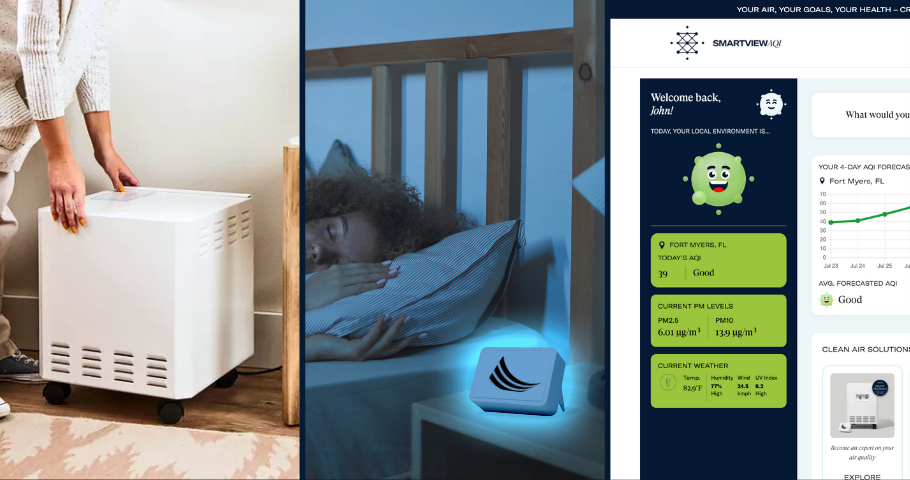Top Indoor Air Myth: Why “Clean Smell” Doesn’t Mean Clean Air
When you walk into a room that smells like “spring breeze” or “fresh linen,” it’s easy to assume the space is clean and healthy. But in reality, that pleasant scent may be masking harmful pollutants in the air. In fact, a big indoor air myth is that a strong, clean smell equates to good air quality. Let’s break down why this perception is misleading—and what’s really going on in the air around you.
The Truth Behind the “Clean” Smell
That signature scent from many household products—think air fresheners, scented candles, and cleaning sprays—is often the result of fragrance VOCs (volatile organic compounds). These are chemicals released into the air that contribute to both indoor air pollution and long-term health risks. Common examples include limonene, benzene, and formaldehyde.
While these VOCs may smell nice, they can contribute to a range of respiratory problems, especially in people with asthma or sensitivities. The problem isn’t just the scent itself, but what’s used to produce it. These compounds can linger in the air long after the scent fades, mixing with other indoor pollutants to create a toxic cocktail of airborne particles.
Air Fresheners: A Case of Chemical Masking
Instead of truly cleaning the air, most air fresheners use chemical masking—essentially covering up bad odors with synthetic fragrances. They don’t neutralize pollutants; they just distract your nose. This can lead to a false sense of cleanliness and may cause you to overlook potential air quality concerns.
For example, spraying a citrus-scented product may make your bathroom feel fresh, but you could actually be releasing a high dose of fragrance VOCs into a small, unventilated space. A better approach? Open windows when weather permits or use an air cleaner designed to remove chemicals and particles from the air.

The Hidden Health Risks of Air Fragrances
- Headaches and migraines
- Allergic reactions
- Hormonal disruption (linked to phthalates and parabens)
- Respiratory conditions like asthma and chronic bronchitis
- Decreased cognitive performance due to airborne chemical load
It’s not just people with asthma or chemical sensitivities who should be concerned. Continuous exposure to fragrance VOCs and poor indoor air quality can lead to:
In fact, studies have shown that some indoor air can be 2 to 5 times more polluted than outdoor air—largely due to indoor air myths like the belief that fragrance equals freshness.
To track what’s really in your air, tools like the EnviroKlenz SMART IAQ Sensor and the SMARTView AQI platform provide real-time data on VOCs, CO₂, and other indoor pollutants—so you’re making decisions based on facts, not fragrance.
The Safer, Smarter Approach to Clean Air
Many people turn to air fresheners to eliminate odors or to signal that a space is clean – which is one of the biggest contributors to this indoor air myth. But in most cases, these products don’t clean the air—they just mask smells. This is another harmful indoor air myth that contributes to poor air quality over time.
Here’s what most air fresheners actually do:
- Use soap and water for basic cleaning tasks rather than harsh household cleaners packed with synthetic chemicals.
- Replace chlorine bleach with milder, non-toxic alternatives like vinegar or lemon juice when disinfecting surfaces.
- Choose natural scents like fresh herbs or essential oils in a diffuser (used sparingly) if you enjoy a pleasant aroma indoors.
Most importantly, focus on air quality itself, not just how a room smells.
Take Control of Your Indoor Air Quality
At EnviroKlenz, we’re committed to helping you breathe cleaner, safer air—without relying on masking agents. Here are a few smart tools to support better air health in your home:
- EnviroKlenz SMART Air Systems: A powerful air purifier that removes VOCs, allergens, and pathogens with hospital-grade efficiency.
- SMART IAQ Sensor: Tracks indoor conditions like VOCs, particulate matter, and humidity in real time.
- SMARTView AQI Platform: Visualize your indoor and outdoor air quality data on an easy-to-read dashboard.
- HVAC Filter by EnviroKlenz: Enhance your existing system with long-lasting filters designed to capture chemicals and allergens.
Together, these tools provide a more complete understanding of what’s really in your air—and how to clean it the right way.

Final Thoughts: Rethink the Clean Smell
Don’t let scent fool you. A truly clean home is one where the air is free of pollutants, not just perfumed. The next time you’re tempted to spray, plug in, or wipe down with a strongly scented cleaner, remember: natural scents from real cleanliness and ventilation are better for your health than any artificial fragrances.
Want to learn more about how to protect your indoor air? Start by monitoring your environment with our SMARTView AQI platform—your first step toward clean, scent-free air that actually supports your well-being.
